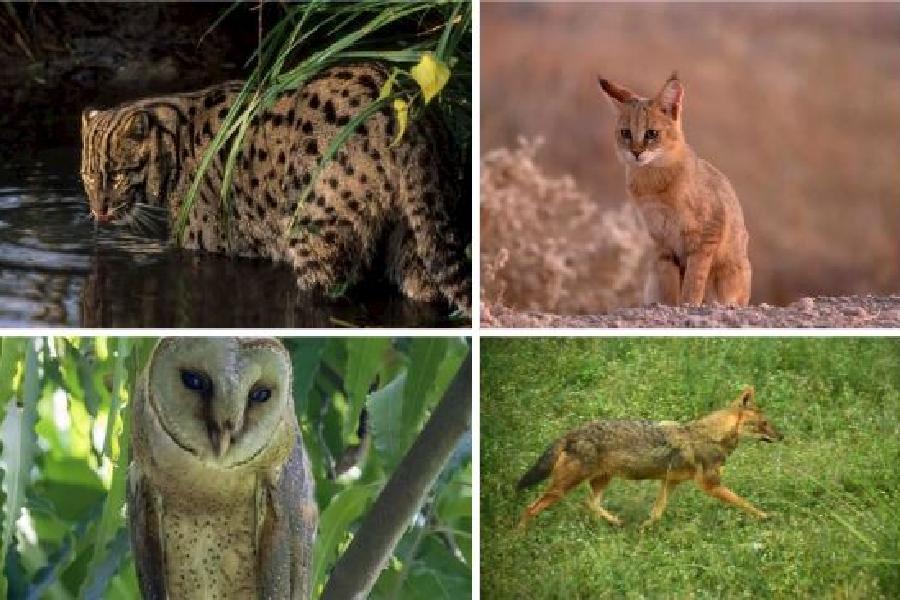The shrinking habitat of predators has contributed to a rapid rise in the rodent population in Kolkata.
This newspaper reported on Friday how the rodent population is swelling in size and threatening the city’s foundations.
Along with the city, the volume of its waste has grown, serving food on a platter to the rats. And as the city has grown, some of its old inhabitants, like jackals, cats, snakes and birds of prey that feasted on rodents, have become fewer.
The real estate boom in Kolkata and its fringes has come at the cost of wetlands and unkempt pockets of wilderness and has led to dwindling numbers of their inhabitants.
A retired forest official who worked in Kolkata for many years in the 1990s said: “When I started my career, the fringes of Kolkata had many jungle cats and fishing cats. The typha and phragmites bushes all along EM Bypass provided a thriving habitat. Now, big apartments have replaced them.”
Nature has its own balance.
In a tropical country like India, the thickets and bushes around water bodies are a natural habitat for some animals that eat rats. “In a bid to beautify the banks, these places are disappearing. We blindly follow a Western model of urbanisation,” said Silanjan Bhattacharyya, an ecologist who teaches at West Bengal State University.
Bonani Kakkar, founder of PUBLIC (People United for Better Living in Kolkata), would hear the howling of jackals at her family home in Hindustan Park as recently as “15 years ago”.
“There was a thriving population of jackals in and around the Rabindra Sarobar Lake. I have seen jackals in the area which is now known as the Lions Safari Park multiple times,” said Kakkar.
But the park has since been cleared of its wilderness.
Jackals are a cross between dogs and foxes. The ones found in India are golden jackals (Canis aureus). They are believed to be widely distributed in south Bengal but lack of a study means no precise estimate of the population.
The Maidan also used to have jackals which would often reach Hastings, Kakkar said.
In Kolkata, the grassland off the airport runway has for many years been a habitat for jackals, which have in the past entered the runway and disrupted flights.
The rapid disappearance of thick green cover in the city has led to the dwindling population of jackals, said ecologists. They are now largely confined to areas like the RCGC and Tolly Club, areas with green cover and restricted human interference.
Sajal Roy, a professor of zoology at Calcutta University, lives in Golf Gardens. His home overlooks the greens of the RCGC. “I see jackals almost every other day on the golf course,” he said.
Barn owls (Tyto alba), the most widespread of all owl species, require cavities for nesting, such as those in hollow trees. In Kolkata, they nest inside old and dilapidated buildings.
Barn owls are very efficient hunters. A nocturnal predator, it prefers small mammals such as rats.
“But such buildings are falling to land sharks every day. Swanky apartments are coming up in those places,” said Sujan Chatterjee, secretary of the Birdwatchers’ Society.
A friend of Chatterjee has an old house near Vidyasagar College in north Kolkata. “His house still has a barn owl nest. But for how long will the house stand?” he said.
“The old houses of Kolkata, with their attic rooms and all, were inclusive places. The modern buildings, made of all glass and concrete, have very little space for non-humans,” said Arjan Basu Roy of Nature Mates, an NGO that works for conservation of animals in urban landscape.
The Usha factory compound, which gave way to South City Apartments and South City Mall, was also home to wild animals like jackals and palm civets. It is just one example, said conservationists.
Jungle cats (Felis chaus) feed primarily on rodents. Fishing cats also eat rodents.
“The eastern and southeastern fringes of Kolkata still have jungle cats. The East Kolkata Wetlands are home to both jungle cats and fishing cats. The preservation of their habitat is very important to control the rodent population. Studies have shown that rodents provide these cats with the maximum metabolisable energy,” said Tiasa Adhya, member of The Fishing Cat Conservation Alliance, a global organisation for research on and conservation of the animal.
The fringes of Kolkata like Garia, Bansdroni, Behala and Salt Lake were all wetland habitats with thriving populations of these cats, said Adhya. The real estate boom has gobbled up these habitats, she said.
Rat snakes, said to have a voracious appetite for rodents, are hardly seen in the urban landscape now. Herpetologist Anirban Chaudhuri recently spotted a rat snake near his home in Jodhpur Park. It was his first sighting in “many years”.
